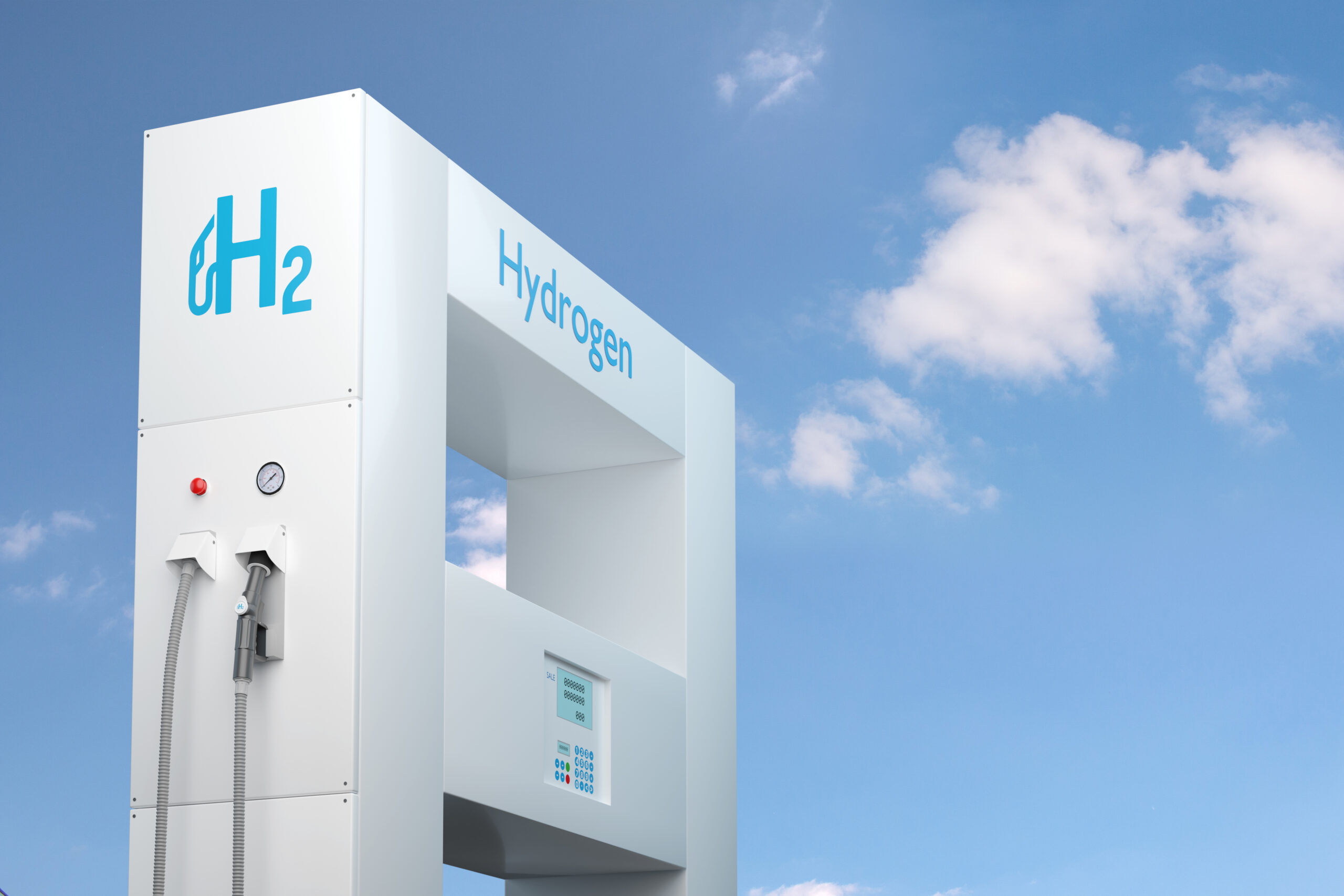The effects of climate change are already here for all to see. Today, decarbonising the world is one of the greatest imperatives we have. According to the International Energy Agency’s (IEA) World Energy Outlook Report 2022, we are in the midst of a global energy crisis spurred by high prices and an uncertain economic outlook, which is reshaping demand for energy the world over. From melting of the polar caps to a burgeoning human population there is a clarion call to ramp up clean energy solutions on a global scale.
While the world is exploring numerous forms of renewable energy, Green Hydrogen may be the answer to a clean, storable, sustainable, energy-dense and versatile source of energy that our planet desperately needs.
The most abundant element in the universe by far, hydrogen was formed during the Big Bang and is a major component in our Sun and all stars. For over two hundred years now, humankind has been harnessing hydrogen in industry – from the first combustion engine to modern day applications in petrochemicals, hydrogenation, fuel cells and more.

Green vs. Grey
Elemental Hydrogen does not naturally occur in great quantities on Earth as its low weight causes it to escape easily from our atmosphere. Therefore, it needs to be extracted. The vast bulk (about 99%, according to IEA) of hydrogen today is extracted using fossil fuels, primarily through a method called steam methane reforming (SMR). It involves the reaction between steam and natural gas (which contains methane in abundance) to produce hydrogen gas. This process is polluting, to say the least, spouting copious amounts of carbon dioxide and methane into our atmosphere and for these reasons it is also referred to as ‘grey hydrogen’.
Green hydrogen (GH2), on the other hand is produced through the electrolysis of water, wherein an electrical current is passed through water to separate it into its constituent hydrogen and oxygen molecules using renewably sourced electricity.
The global demand for hydrogen has tripled since 1975, demonstrating an increasing awareness of its importance and availability. It reached 94 million tonnes (Mt) in 2021 which was about 2.5% of the final global energy consumption, according to IEA. Most of this demand is met by the burning of fossil fuels, while green hydrogen only accounts for 1% of all hydrogen produced.
One of the key factors that holds GH2 back from becoming more widely used is that its cost negates its commercial viability, and therefore there is less impetus to fully explore its possibilities
An Army of Uses
GH2 can also be used as a key energy source fed into other industrial processes- where few, if any climate neutral options exist. This makes its decarbonisation potential even more appealing.
It could be a game-changer in a number of different industries, as a:
• Fuel in heavy industry, long haul freight, shipping and aviation.
• Heat source for industries (steel, cement, paper, food and aluminium) as well as for residential and commercial buildings
• Feedstock for manufacturing chemicals (fertilizers, fuel refining, plastics) and products (metallurgy, food, steel and glass)
The demand for hydrogen today is largely restricted to the chemical and refining sectors, where it is estimated that over one-sixth of all hydrogen produced is “by-product” hydrogen from processes in the petrochemical industry. With respect to newer applications, road transport has become an important avenue, especially with the advent of fuel cell electric vehicles (FCEVs) – particularly in long distance trucks, China being a prime example of this.
One of the key factors that holds GH2 back from becoming more widely used is that its cost negates its commercial viability, and therefore there is less impetus to fully explore its possibilities. Fortunately, there are already public and private players who are making a concerted effort to do so.
Some of the key projects which could demonstrate the potential and critical end uses of GH2 span the globe and include- the Iberdrola-Fertiberia Project in Spain (chemicals), Hybrit project in Sweden (iron and steel), JERA project in Japan (power generation) and Siemens Gamesa’s Brande Hydrogen Project in Denmark (wind power).

Pressing Advantages
GH2 is completely sustainable, as there are virtually no resultant greenhouse gas emissions in its production- only producing steam when burnt, which also makes it climate neutral. It therefore has the potential to save 830 million tonnes of CO2 released annually into our air through the commercial production of the gas using fossil fuels. This is the same as the total emissions of the UK and Indonesia combined, which is a significant savings.
One of the key problems facing renewable energy today, apart from cost, is storage. Hydrogen could be the answer, as hydrogen-based fuels have the potential to transport easily from energy-rich sources to energy-starved regions across the world. It can also form a green bridge to storing and transporting other renewable sources of energy like solar, hydroelectric and wind power.
Versatility is another advantage of green hydrogen – it is invaluable not only as a fuel source in itself but because it can be converted to electricity or synthetic gas to be leveraged in industrial, commercial and mobility applications.

The Downside
Despite its well-touted advantages, GH2 has its drawbacks- it is still a very expensive fuel source, mainly because of the cost of the renewable energy required to produce it.
As it currently stands, grey hydrogen is much cheaper to produce, costing $1-2 per kilogram, leaving aside the impact of the carbon emissions, of course. GH2 on the other hand varies between $3-8/kg in some regions (for example Europe) and thus makes it a more prohibitive option, climate considerations aside, according to a Price Waterhouse-Cooper study).
Therefore, regions with larger, cheap renewable energy resources like the Middle East, North America, Russia, Africa and Australia have a greater advantage, undercutting production costs to as little as $3-5/kg. It is predicted that these countries could further lower this cost to as little as $1-1.5/kg by 2050, due to increasing demand and increased renewable energy production capabilities. A price of under $2/kg could be the tipping point at which GH2 could become commercially viable on a global scale.
What contributes to this cost is also how energy-intensive GH2 is to produce and store- since hydrogen cannot be compressed as efficiently as hydrocarbons. To store hydrogen, it needs to be compressed to 700 times normal atmospheric pressure (four times that of natural gas) or brought down to a temperature of -253 C, near absolute zero. A possible solution is to convert it to ammonia (NH3) for transport, but each conversion means energy loss and a higher final price to the end user especially.
Also, given its volatile and highly flammable nature, green hydrogen must be kept under the most careful and stringent safety protocols. Keep in mind, hydrogen is 20 times more explosive than petrol!
According to industry leaders, the still-prohibitive costs, fickle supply, unsubstantiated demand, as well as the lack of adequate regulatory frameworks and infrastructure for green hydrogen have hindered it from becoming a significant part of the global energy system.

Versatility is another advantage of green hydrogen - it is invaluable not only as a fuel source in itself but because it can be converted to electricity or synthetic gas to be leveraged in industrial, commercial and mobility application
Towards a Cleaner Future?
For all its benefits, a lot has to happen before green hydrogen can be widely harnessed. The priority should first be placed on scaling up the production and use of renewable energy over traditional energy systems. Next would be to speed up the implementation of low-cost renewable electricity as a viable substitute in the energy sector, before we can truly maximize the scope of green hydrogen to decarbonise heavy industry, aviation, long-distance transport and shipping. All these are more challenging to electrify according to experts from the World Economic Forum (WEF).
In a rapidly changing world, the push towards Net Zero Emissions has become a priority for many countries, with 91% of the global economy being covered by pledges to do so. Hydrogen is seen by experts as a critical paving stone to that end with the potential to cover a fifth of final energy demand by 2050 (according to WEF). There are a number of public and private initiatives underway across the world that are signaling the increasing importance of this clean fuel. A number of governments are setting national hydrogen strategies and earmarking investments, while private sector players are joining them by making net zero pledges that will further expedite GH2 becoming a key player in the global energy market.
One of the most widespread routes to reduce costs has been to increase the availability of green electrolysers that are essential to manufacturing GH2. The United Nations for example, has launched the Green Hydrogen Catapult to reduce costs and announced its plan to more than double its goal for green electrolysers from 25 to 45 gigawatts by 2027.
Ultimately, the rise of Green Hydrogen as a dominant clean fuel source will depend on a systemic shift in how we extract and channel renewable energy. The more clean energy we have, the more clean energy we can channel into its production, therefore lowering costs and boosting supply worldwide. Innovation, international cooperation, key policy measures and resource sharing could also tip the scales to make a global hydrogen-based economy a reality.
The future is uncertain, but the hope for a cleaner, greener world remains.



1 Comment